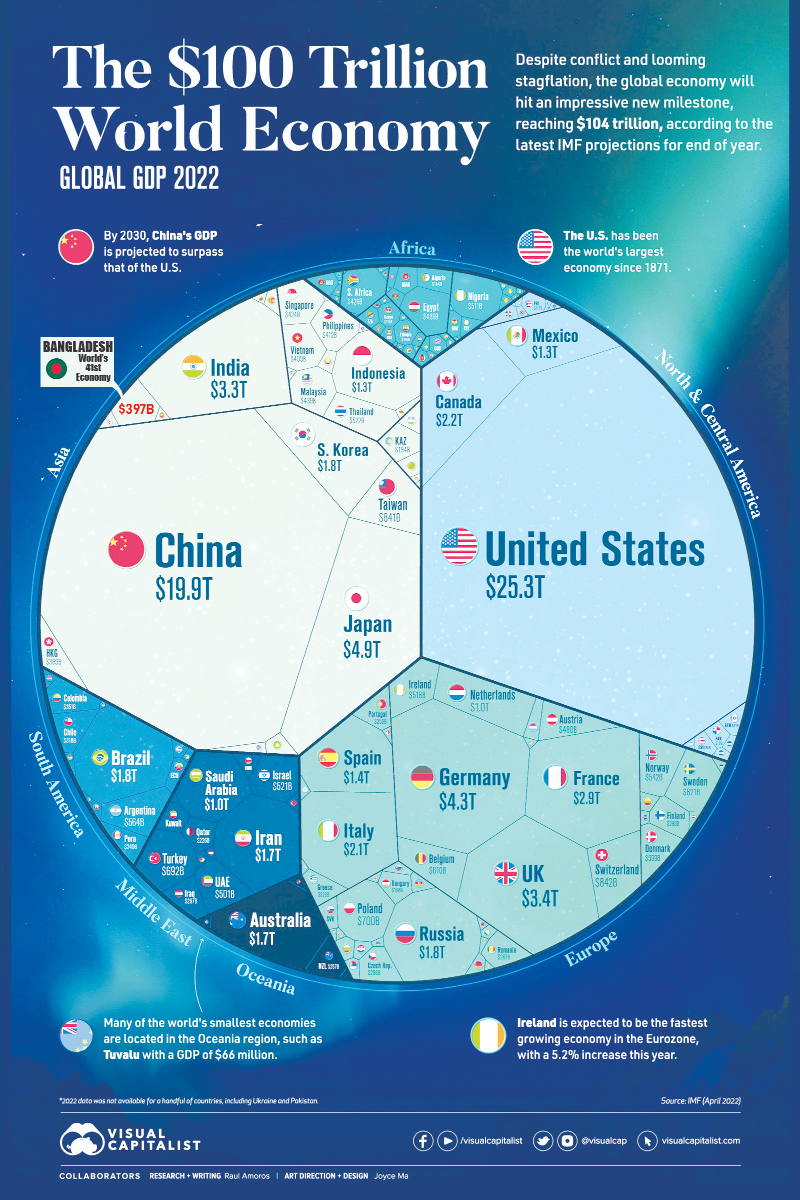
Bangladesh has become the 41st largest economy in the world, according to a new report.
Bangladesh and India are now the only two South Asian countries that are among the world’s 50 largest economies, says a chart — which shows the $100 trillion global economy — published by the Visual Capitalist based on data from the International Monetary Fund (IMF).
Bangladesh climbed up a notch from 42nd in 2021 to 41st this year while India kept its position as the sixth largest global economy from last year.
ALSO READ - Pakistan should learn from Bangladesh: Indian defence minister
According to the visualised statistic, Bangladesh's gross domestic product (GDP) was $397 billion this year — which is 0.4 per cent of the global GDP and lower than last year's $400 billion.
Of the other South Asian countries, only Bhutan ranked 163rd with a GDP of $3 billion.

Statistics for other countries of the region, such as Pakistan and Sri Lanka, were unavailable as they did not make it to the top 50.
By the end of 2022, in line with the latest projections, IMF expects the global economy to reach nearly $104 trillion in nominal value, said the report published by Visual Capitalist on July 12.
Although growth keeps trending upwards, the recovery that was expected in the post-pandemic period is looking strained. Global economic projections are also getting revised downwards because of recent conflicts, supply chain bottlenecks, and subsequent inflation.
Global annual GDP growth for 2022 was initially projected to be 4.4 per cent as of January, but this has since been adjusted to 3.6 per cent.
According to the chart, the United States is still the global economic leader with a GDP of $25.3 trillion, making up nearly one-quarter of the global economy, closely followed by China with $19.9 trillion.
The frontrunner in Europe is Germany at $4.3 trillion, with the UK coming in second place at $3.4 trillion.
One significant change since the last reported figures is that Brazil has entered the top 10 with $1.8 trillion, having surpassed South Korea.
Russia has fallen to 11th place with a GDP of $1.8 trillion.
Meanwhile, some of the world’s smallest economies were hit particularly hard by the pandemic, and have subsequently been the most affected by the inflation and food supply shortages resulting from the Russia-Ukraine war.
The smallest economy in the world measured in the IMF rankings is Tuvalu with a GDP of $66 million, said the report.
Most from the bottom 50 are considered low- to middle-income and emerging/developing countries.
According to the World Bank, in developing countries, the level of per capita income in 2022 will be about 5 per cent below the pre-pandemic trends.
The report also said that some countries are projected to experience negative GDP growth this year, particularly emerging and developing economies in Europe.
While global economic growth has already been revised downwards, it’s possible that the situation could be more serious.
Currently, global consumer inflation is pegged at 7 per cent. Daily goods are becoming increasingly difficult to purchase and interest rates are rising as central banks worldwide try to control the situation.
As recent events in Sri Lanka demonstrate, low-income countries are particularly at risk of economic volatility.